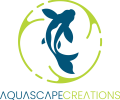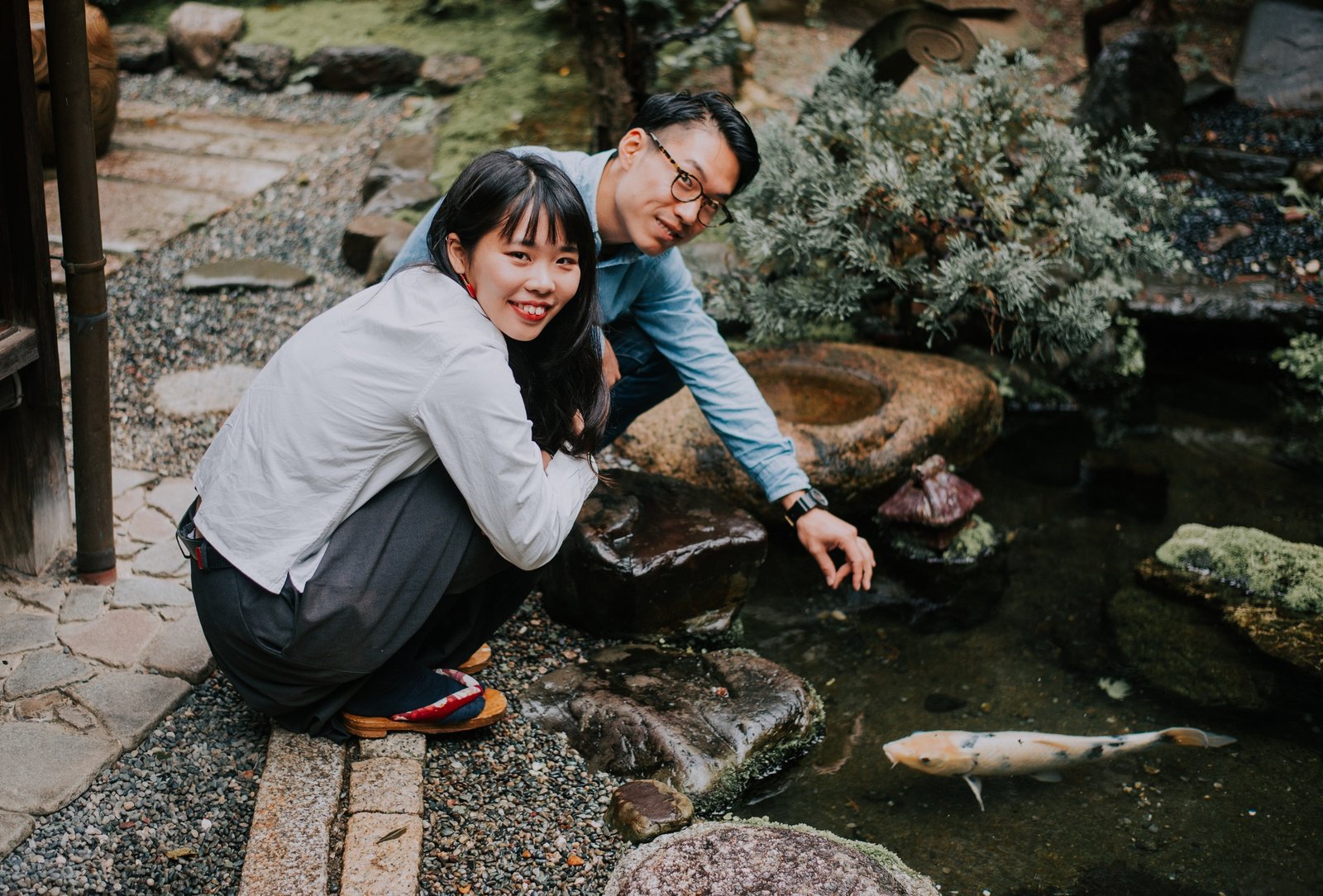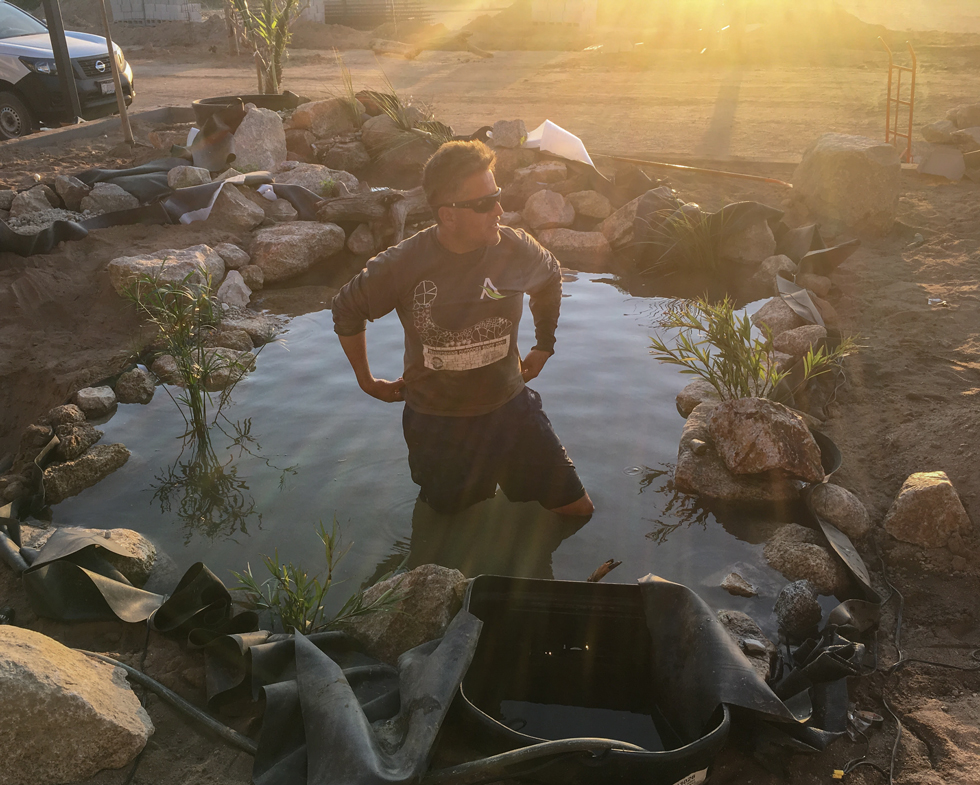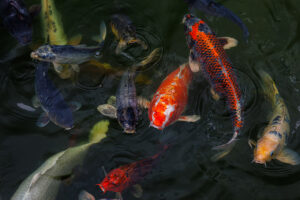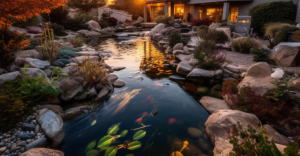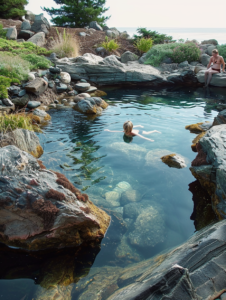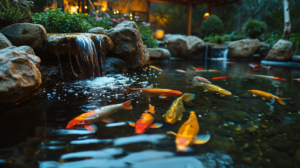Do you dream of a beautiful koi pond filled with vibrant fish—but struggle with murky water, algae blooms, or sick koi? You’re not alone. Water quality is one of the most common concerns among Bay Area pond owners with large koi ponds.
At Aquascape Creations, we specialize in building and maintaining large koi ponds that thrive in the Bay Area’s unique climate. From Livermore to San Jose, we’ve helped countless homeowners enjoy crystal-clear water and happy, healthy koi year-round.
Here’s everything you need to know to keep your big koi pond in top shape.
1. Mastering the Basics: What Makes Water Healthy for Koi?
Clean pond water starts with a system that supports biological balance. That means the right filtration, proper circulation, and a pond ecosystem designed to work with nature—not against it.
Key Components of Healthy Water:
-
Biological and Mechanical Filtration: Large koi produce a lot of waste. You’ll need high-capacity filters to remove debris and process ammonia effectively.
-
Strong Circulation and Oxygenation: Aerators, waterfalls, and circulation loops ensure oxygen levels stay high, which supports both koi and beneficial bacteria.
-
Water Testing: Keep tabs on ammonia, nitrites, nitrates, and pH. Consistent levels are crucial for fish health.
-
Responsible Feeding: Overfeeding is a top cause of water quality issues. Only feed what your koi can eat in 2–3 minutes.
-
Regular Water Changes: Even the best filtration can’t remove everything. Partial water changes (10–20%) every week or two flush out excess nutrients.
2. Ideal Water Parameters for a Healthy Koi Pond
Understanding your water’s chemistry is key to prevention.
| Parameter | Ideal Range |
|---|---|
| Ammonia | 0 ppm |
| Nitrite | 0 ppm |
| Nitrate | < 20–40 ppm |
| pH | 7.0 – 8.5 |
Use liquid test kits for the most accurate results, and monitor weekly—especially during season changes.
3. How to Control Algae in a Large Koi Pond
Algae problems are common, but preventable with the right approach:
-
Nutrient Control: Reduce organics with good filtration and debris removal.
-
Shade and Plant Cover: Use floating plants or shade sails to block sunlight that fuels algae growth.
-
Beneficial Bacteria: Regularly introduce bacteria that outcompete algae for nutrients.
-
UV Clarifier: A properly sized UV unit helps eliminate green water by clumping microscopic algae.
4. Preventing Koi Illness Through Water Quality
Water quality and fish health go hand in hand. Most koi illnesses stem from stress caused by poor water conditions.
Prevention Tips:
-
Maintain proper water chemistry.
-
Quarantine new fish for 2–4 weeks before adding them to the main pond.
-
Feed a balanced, high-quality koi diet.
-
Avoid overcrowding—give your fish space.
-
Observe daily. Behavior changes (like gasping or rubbing) are early warning signs.
5. Is a UV Sterilizer Necessary for Bay Area Koi Ponds?
While not mandatory, a UV sterilizer is highly recommended for large koi ponds, especially with varied sun exposure across the Bay Area. Benefits include:
-
Crystal-Clear Water: UV sterilizers eliminate floating algae that cloud your view.
-
Lower Disease Risk: UV systems reduce harmful bacteria and parasites.
Get the right size UV unit for your pond volume and flow rate to maximize performance.
6. Can You Use Tap Water in Your Koi Pond?
Bay Area tap water typically contains chlorine or chloramine, both harmful to fish and beneficial bacteria.
Before adding tap water to your pond, always use a dechlorinator/water conditioner that neutralizes these chemicals. Never skip this step—even for partial water changes.
Your Partner for Healthy Koi Ponds in the Bay Area
Whether you’re just getting started or you’re trying to bring balance back to an existing pond, Aquascape Creations is here to help. We build and maintain high-performance koi ponds designed specifically for the Bay Area climate.
Located in Livermore and serving the entire Bay Area, we offer:
-
Custom koi pond design
-
Advanced filtration systems
-
Full-service pond maintenance
-
Expert water quality solutions
📞 Call or text Jorge at 925-222-5052
🌐 Visit aquascapecreations.com
FAQ: Koi Pond Water Quality
Q: How often should I test my pond water?
A: Weekly is ideal, especially during temperature swings or after adding new fish or water.
Q: What should I do if I have high ammonia?
A: Stop feeding immediately, perform a partial water change, and add ammonia-neutralizing products. Then test again.
Q: Can koi survive without filtration?
A: Not in the long term. Koi produce too much waste for a stagnant, unfiltered pond to stay clean or safe.
